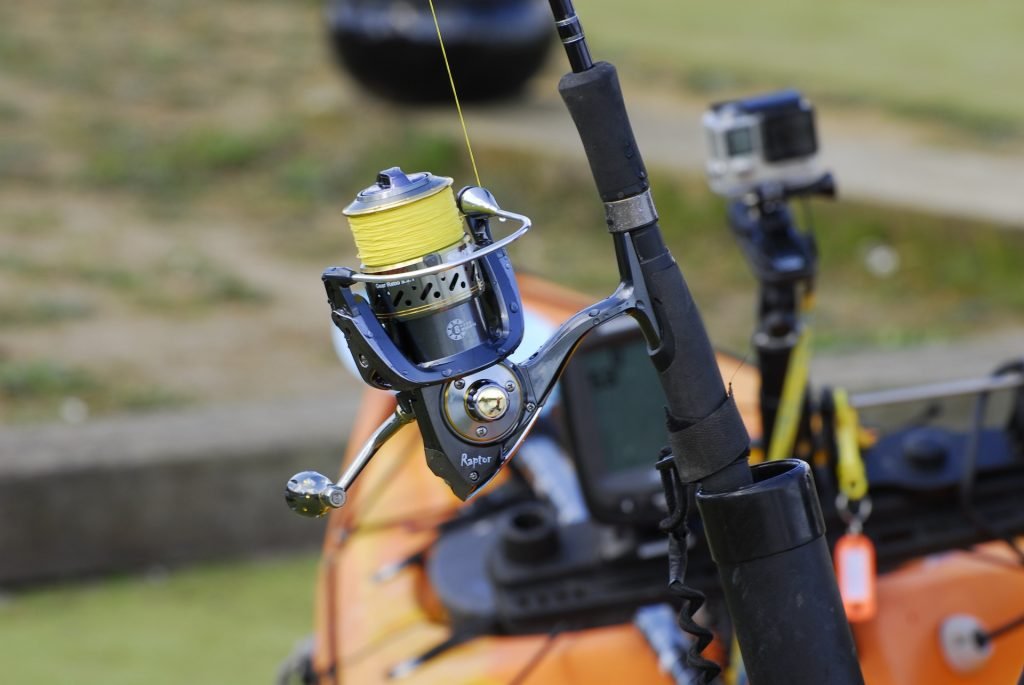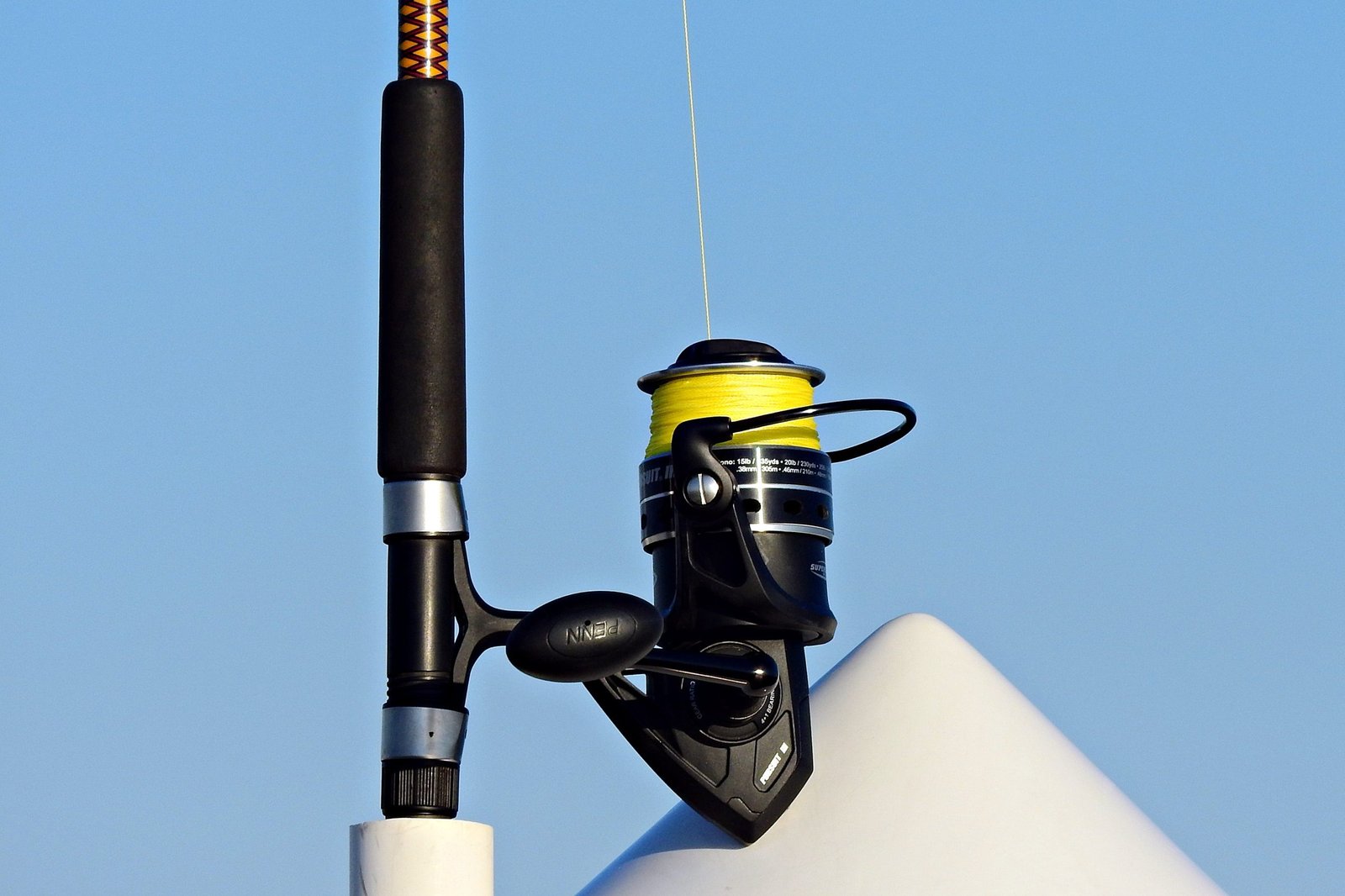
When it comes to choosing the best fishing line color, there are a lot of opinions out there.
Some anglers believe that the color of the line can make all the difference in whether or not you catch fish, while others think that it doesn’t really matter.
I’ve spent some time experimenting with different line colors and have come to some conclusions about what works best.
First and foremost, it’s important to understand that different types of fishing lines come in different colors.
Monofilament lines are often clear, but they also come in every color you might think of, while fluorocarbon lines can be clear or slightly colored. Braided lines come in a wide variety of colors, from bright greens and yellows to more subtle blues and grays.
So, what color fishing line is best?
The answer is that it depends on the situation.
In clear water with good visibility, a clear or low-visibility line is often the best choice.
In murky water or low-light conditions, a brighter line can help you see where your line is and detect bites more easily.
Some anglers also believe that certain colors, like pink or green, can attract fish and increase your chances of getting a bite.
Ultimately, the best color fishing line is the one that you feel most confident using and that works best for the conditions you’re fishing in.
Fishing Line Types
When it comes to fishing line, there are three main types: monofilament, braided, and fluorocarbon. Each type has its own unique properties and is best suited for different situations.
Monofilament Fishing Line
Monofilament line, or “mono” for short, is a popular choice for many anglers. It is made from a single strand of nylon and is known for its stretch and shock-absorbing properties. This makes it a great choice for fishing in areas with lots of underwater obstacles, as it can help prevent your line from breaking.
Mono is also relatively inexpensive compared to other types of fishing line, making it a good choice for beginners or anglers on a budget. However, it does have some downsides. It can be prone to memory, meaning it may retain the shape of the spool it was wound on, causing it to twist and tangle. It is also visible in the water, which can make it harder to catch finicky fish in clear water.
Braided Fishing Line
Braided line, or “braid”, is made up of several strands of synthetic material woven together. It is known for its strength and sensitivity, making it a great choice for fishing in deep water or for catching larger fish.
Braid is also highly visible in the water, which can make it easier to detect bites. However, this can also be a downside in clear water or when fishing for more skittish fish. Braid is also more expensive than mono, so it may not be the best choice for beginners or anglers on a budget.
Fluorocarbon Fishing Line
Fluorocarbon line is made from a single strand of fluorocarbon material. It is known for being nearly invisible in the water, making it a great choice for clear water or when fishing for more skittish fish.
Fluoro is also more abrasion-resistant than mono, meaning it is less likely to break when rubbing against rocks or other underwater obstacles. However, it is also more expensive than mono and braid, so it may not be the best choice for all anglers.
Each type of line has its own unique properties and advantages, so it’s important to choose the one that best fits your needs.
What Affects Line Visibility?

Water Clarity
Water clarity plays a crucial role in determining how visible different colors of fishing lines will be. In clear water, such as pristine lakes or calm coastal areas, transparent lines might be less noticeable. On the other hand, in murky water, colored lines may be more visible as they contrast with the water.
Light Conditions
Light conditions can also affect the visibility of fishing lines. In bright sunlight, fluorescent or high-visibility lines may be easier to see, while in low light conditions, such as early morning or late evening, darker lines may be less visible. It’s important to consider the time of day and weather conditions when choosing the color of your fishing line.
Line Color
The color of the fishing line can also have an impact on visibility. Some anglers believe that certain colors are more visible to fish, while others argue that it doesn’t make a difference. However, it’s important to note that the refractive index of the line can also affect its visibility. A line with a high refractive index may be more visible than one with a low refractive index.
Color Selection for Different Fishing Conditions

As mentioned above, it’s important to consider the water conditions you’ll be fishing in. Different colors work better in different types of water, and choosing the right color can make a difference. How big of a difference it makes is still debatable, but I have some suggestions which you will find below.
Clear Water Conditions
In clear water conditions, it’s important to choose a fishing line color that won’t be easily detected by fish. Lighter colors like clear, blue, and green can work well in these situations. Clear lines are particularly useful when fishing in shallow water or when targeting fish that are easily spooked.
Murky Water Conditions
In murky water conditions, it’s best to choose a line color that provides good contrast against the water. Brighter colors like yellow, orange, and red can work well in these situations, as they are more visible to fish in low light conditions. These colors can also help you detect bites more easily.
Vegetation and Cover
When fishing in heavy cover or around vegetation, it’s important to choose a line color that blends in with the surroundings. Green and brown lines can work well in these situations, as they are less visible to fish.
It’s also important to consider the potential for color fading over time. Some line colors may fade more quickly than others, which can make them less effective over time. When choosing a line color, it’s a good idea to consider how long it will last and whether it will still be effective after extended use.
Advantages of Specific Line Colors
Green Line for Freshwater
Green is a popular color for freshwater fishing line because it blends in well with the surrounding vegetation, making it less visible to fish. This is particularly useful when fishing in clear water, where fish can easily detect lines that are too visible. Green fishing line is also great for inshore fishing, where the water is typically shallow and clear.
Blue Line for Open Waters
Blue is a great color for fishing line in open waters, such as the ocean, because it blends in with the blue color of the water. This makes it less visible to fish that are swimming at deeper depths. Blue line is less likely to spook fish, making it a great choice for anglers who are targeting larger, more cautious fish.
Yellow Line for High Visibility
Yellow fishing line is great for high visibility situations, such as fishing in murky or stained water. This is because the bright color makes it easier for anglers to see their line and detect bites. Hi-vis yellow fishing line is also great for beginners who are just starting out, as it allows them to easily see the line and make adjustments as needed.
Frequently Asked Questions
Which color line is preferable for bass fishing in freshwater?
When it comes to bass fishing in freshwater, it is best to use a green or clear line. These colors blend in well with the water and are less likely to spook the fish. However, it is important to consider the water conditions and adjust accordingly. If the water is murky or stained, a darker line may be more effective.
Does the visibility of fishing line color affect its performance?
Yes, the visibility of fishing line color can affect its performance. Highly visible lines can spook fish and make them less likely to bite. On the other hand, less visible lines can be difficult to see, making it harder to detect bites. It is important to consider the water conditions and the behavior of the fish when selecting a line color.
What are the advantages of using colored fishing line at different depths?
Using colored fishing line at different depths can help you better understand the behavior of the fish and improve your chances of a successful catch. For example, using a yellow line in shallow water can help you see the line and detect bites more easily. Using a blue line in deeper water can help you blend in with the surroundings and avoid spooking the fish.
Is there a difference in effectiveness between clear and colored fishing line?
Clear fishing line can be effective in clear water conditions, but colored lines can be more effective in other situations. Colored lines can help you blend in with the surroundings and avoid spooking the fish. It is important to consider the water conditions and the behavior of the fish when selecting a line color.
For saltwater fishing, what color line yields the best results?
For saltwater fishing, it is best to use a blue or green line. These colors blend in well with the water and are less likely to spook the fish. However, it is important to consider the water conditions and adjust accordingly. If the water is murky or stained, a darker line may be more effective.
In clear water conditions, which color braided fishing line should be used?
In clear water conditions, it is best to use a clear or white braided fishing line. These colors blend in well with the water and are less likely to spook the fish. However, it is important to consider the water conditions and adjust accordingly. If the water is murky or stained, a darker line may be more effective.




